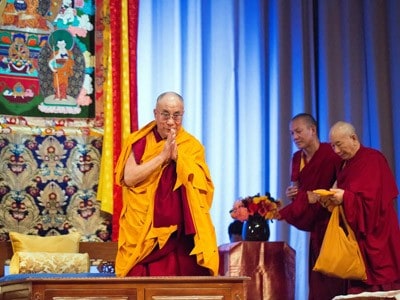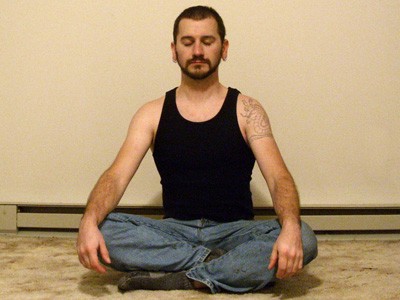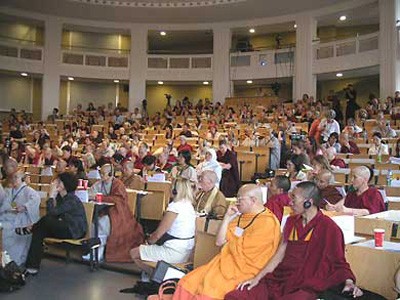Bhikshuni ordination in the Tibetan tradition
Statement of His Holiness the Dalai Lama

First International Congress on Buddhist Women’s Role in the Sangha: Bhikshuni Vinaya and Ordination Lineages. Hamburg University, Hamburg, Germany, July 18-20, 2007.
- The Buddha taught a path to enlightenment and liberation from suffering for all sentient beings and people of all walks of life, to women as well as men, without discrimination as to class, race, nationality or social background.
- For those who wished to fully dedicate themselves to the practice of his teachings, he established a monastic order that included both a Bhikshu Sangha, an order of monks, and a Bhikshuni Sangha, an order of nuns.
- For centuries, the Buddhist monastic order has thrived throughout Asia and has been essential to the development of Buddhism in all its diverse dimension—as a system of philosophy, meditation, ethics, religious ritual, education, culture, and social transformation.
- While the Bhikshu ordination lineage still exists in almost all Buddhist countries today, the Bhikshuni ordination lineage exists only in some countries. For this reason, the four-fold Buddhist community (of Bhikshus, Bhikshunis, Upasakas, and Upasikas) is incomplete in the Tibetan tradition. If we can introduce the Bhikshuni ordination within Tibetan tradition, that would be excellent in order to have the four-fold Buddhist community complete.
- In today’s world, women are playing major roles in all aspects of secular life, including government, science, medicine, law, arts, humanities, education, and business. Women are also keenly interested in participating fully in religious live, receiving religious education and training, acting as role-models, and contributing fully to the development of human society. In the same way, nuns and followers of Tibetan Buddhism around the world are keenly interested in full ordination for nuns within the Tibetan tradition.
- Given that women are fully capable of achieving the ultimate goal of the Buddha’s teachings, in harmony with the spirit of the modern age, the means and opportunity to achieve this goal should be completely accessible to them.
- The most effective means and opportunity for achieving this goal is full ordination (Upasampada) as a Bhikshuni and full participation in the life of a community of Bhikshunis, that is, a Bhikshuni Sangha in their practice tradition.
- Full ordination for women will enable women to pursue wholeheartedly their own spiritual development through learning, contemplating, and meditating, and also enhance their capacities to benefit society through research, teaching, counseling, and other activities to help extend the life of the Buddhadharma.
On the basis of the above considerations, and after extensive research and consultation with leading Vinaya scholars and Sangha members of the Tibetan tradition and Buddhist traditions internationally, and with the backing of the Tibetan Buddhist community, since 1960s, I express my full support for the establishment of the Bhikshuni Sangha in the Tibetan tradition.
Within the Tibetan community, we have been striving to raise standards of nuns in terms of education, introduced Buddhist philosophical studies and also worked to introduce the bestowal of a Geshe degree (highest academic degree of monastic studies) for nuns as well. I am pleased that we have been successful in accomplishing these aims to a great extent.
I also believe that, since a Bhikshuni Sangha has long been established in the East Asian Buddhist traditions (of China, Taiwan, Vietnam, and Korea) and is presently being revived in the Theravada tradition of South Asia (especially Sri Lanka), the introduction of the Bhikshuni Sangha within the Tibetan Buddhist tradition should be considered seriously and favorably.
But in terms of the modality of introducing Bhikshuni vows within the tradition, we have to remain within the boundaries set by the Vinaya—otherwise, we would have introduced the Bhikshuni vow in the Tibetan Buddhist tradition long time ago.
There are already nuns within the Tibetan tradition who have received the full Bhikshuni vow according to the Dharmagupta lineage and whom we recognize as fully ordained. One thing we could do is to translate the three primary monastic activities (Posadha, Varsa, Pravarana) from the Dharmagupta lineage into Tibetan and encourage the Tibetan Bhikshunis to do these practices as a Bhikshuni Sangha, immediately.
I hope that these combined efforts of all Buddhist traditions bear fruit.
The Buddhist Bhikshu Tenzin Gyatso
The Dalai Lama
His Holiness the Dalai Lama
His Holiness the 14th Dalai Lama, Tenzin Gyatso, is the spiritual leader of Tibet. He was born on July 6, 1935, to a farming family, in a small hamlet located in Taktser, Amdo, northeastern Tibet. At the very young age of two, he was recognized as the reincarnation of the previous 13th Dalai Lama, Thubten Gyatso. The Dalai Lamas are believed to be manifestations of Avalokiteshvara or Chenrezig, the Bodhisattva of Compassion and the patron saint of Tibet. Bodhisattvas are believed to be enlightened beings who have postponed their own nirvana and chosen to take rebirth in order to serve humanity. His Holiness the Dalai Lama is a man of peace. In 1989 he was awarded the Nobel Peace Prize for his non-violent struggle for the liberation of Tibet. He has consistently advocated policies of non-violence, even in the face of extreme aggression. He also became the first Nobel Laureate to be recognized for his concern for global environmental problems. His Holiness has traveled to more than 67 countries spanning 6 continents. He has received over 150 awards, honorary doctorates, prizes, etc., in recognition of his message of peace, non-violence, inter-religious understanding, universal responsibility and compassion. He has also authored or co-authored more than 110 books. His Holiness has held dialogues with heads of different religions and participated in many events promoting inter-religious harmony and understanding. Since the mid-1980’s, His Holiness has begun a dialogue with modern scientists, mainly in the fields of psychology, neurobiology, quantum physics and cosmology. This has led to a historic collaboration between Buddhist monks and world-renowned scientists in trying to help individuals achieve peace of mind. (Source: dalailama.com. Photo by Jamyang Dorjee)


